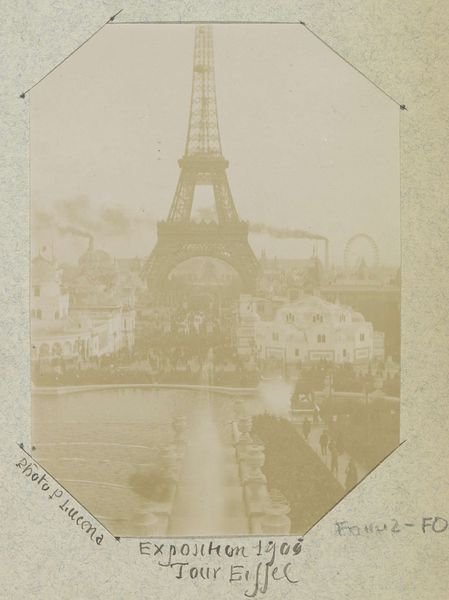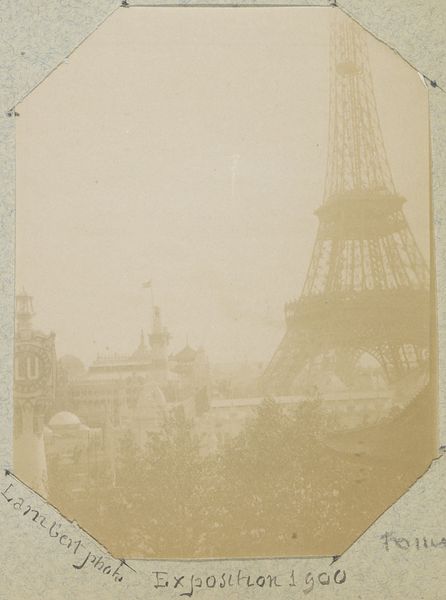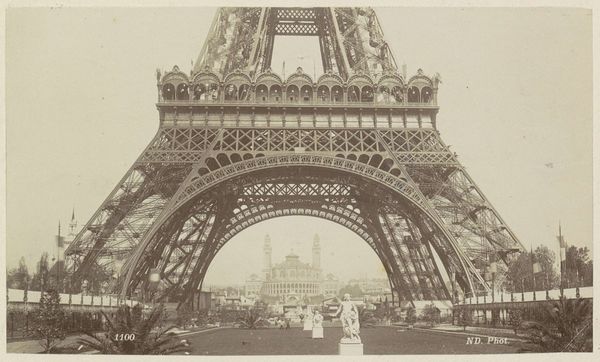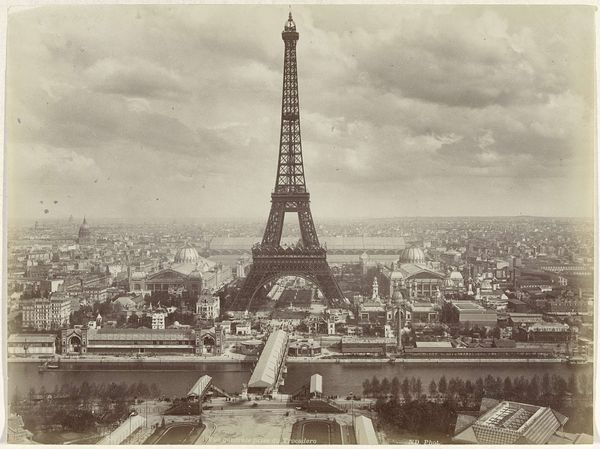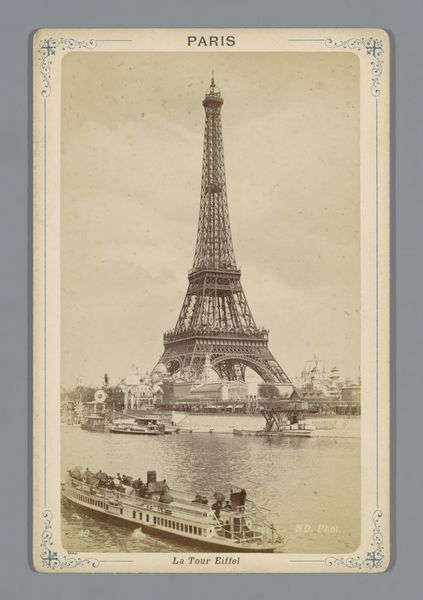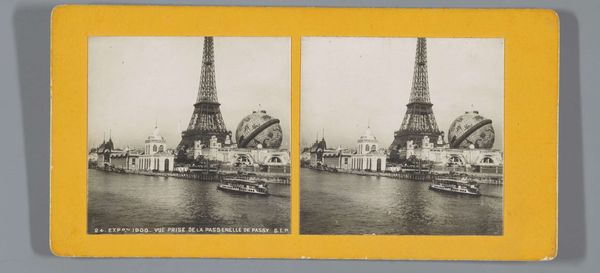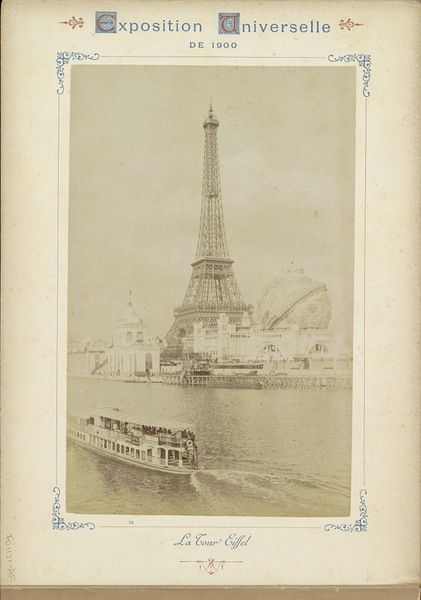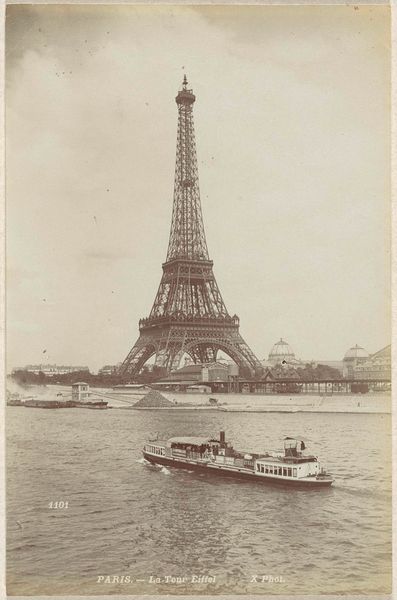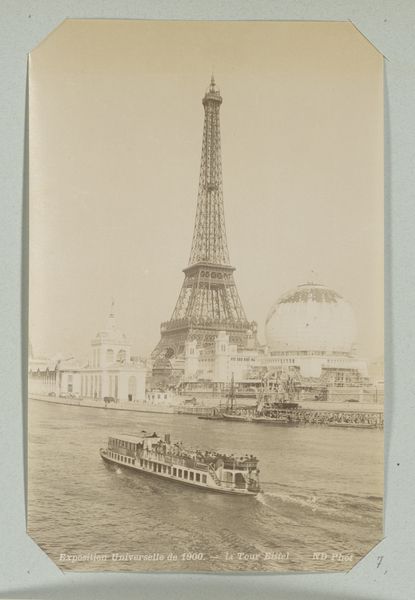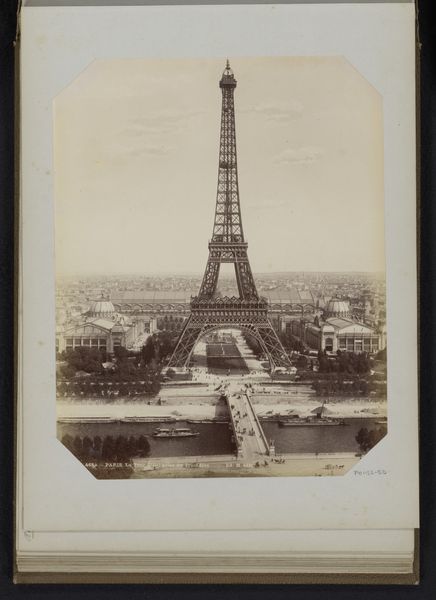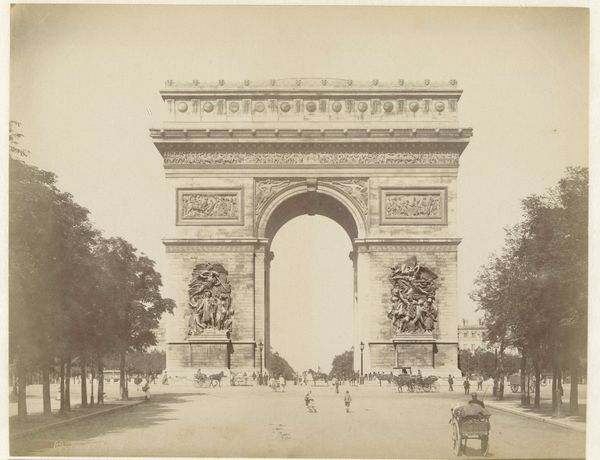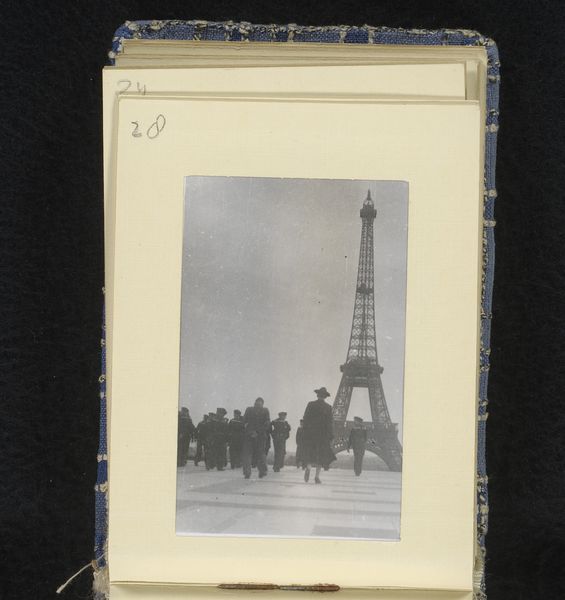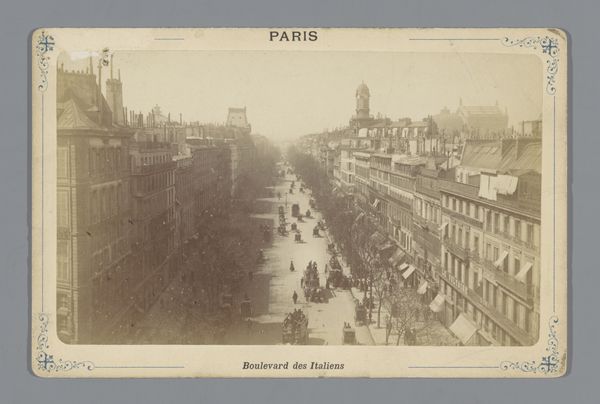
Bezoekers van de Wereldtentoonstelling van 1900 met op de achtergrond de Eiffeltoren 1900
0:00
0:00
Dimensions: height 82 mm, width 112 mm
Copyright: Rijks Museum: Open Domain
Editor: So, this photograph, "Visitors to the World Exhibition of 1900 with the Eiffel Tower in the Background," from around 1900. It's an albumen print and I’m struck by how this new, monumental tower is now just another part of the urban fabric for these visitors. How did this world exhibition impact public perception of progress at the time? Curator: That's an excellent starting point. This photograph offers a powerful insight into the social and cultural dynamics surrounding the World Exhibition. Think about what this exposition represented: it was a carefully orchestrated display of national power, industrial advancement, and colonial ambition. How do you think the public was meant to react to it? Editor: I guess the average citizen should see and admire the latest innovations, believe in the progress brought by French industry, and, I don't know, just have a good time in the fair? But it feels kind of like propaganda? Curator: Precisely. This event shaped national and international identities, and you can even see the visual language being developed, the aesthetics that promote that view. What's striking is how easily this photo presents this blend of entertainment and national spectacle as an ordinary street scene. What does the inclusion of these anonymous "visitors" tell us? Editor: It makes me wonder about the everyday experiences of the people who went there. What did it mean for them to be part of this… vision of the future? The fact that this photograph does not try to take a moral standing on that view makes it so compelling. Curator: Exactly. That visual record then became part of a feedback loop, normalizing those power dynamics for subsequent generations. This isn't just a record of history; it actively shapes our understanding of it. Editor: It’s amazing how a simple photo can be so rich with social context!
Comments
No comments
Be the first to comment and join the conversation on the ultimate creative platform.
